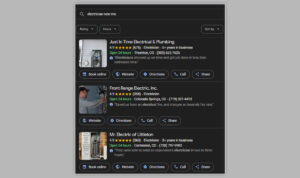Unleash the power of your brand by mastering the art of brand voice and tone. Dive into the world of branding and discover how to create a compelling brand personality that resonates with your audience.
Learn the steps to develop a successful brand voice and tone, understand the role of predictability, probability, and pattern, and get inspired!

Introduction
Understanding Brand Voice and Tone
The Importance of a Consistent Brand Voice and Tone
Steps to Develop a Successful Brand Voice and Tone
- Identifying Your Brand Personality
- Understanding Your Audience
- Defining Your Brand’s Values
- Creating a Brand Voice Chart
- Implementing Your Brand Voice Across All Channels
The Role of Predictability, Probability, and Pattern in Brand Voice and Tone
Conclusion
Introduction
Hello, brand enthusiasts! If you’ve ever found yourself pondering over the question, “What is brand voice and tone,” then you’ve landed in the right place.
In the vast universe of branding, your voice and tone are more than just words on a page.
They’re your brand’s unique personality, the rhythm that gives life to your marketing symphony.
Understanding Brand Voice and Tone
So, let’s start with the basics. What is brand voice? And what is brand tone? Your brand voice is the consistent expression of your brand through words and prose styles that engage and motivate your audience.
It’s your brand’s personality manifested in words. It’s like the unique melody of a song that makes it instantly recognizable.
On the other hand, your brand tone is the emotional inflection applied to your brand voice. It can change based on the context, much like how our tone of voice changes when we’re excited, angry, or sad. It’s the variation in the melody that adds depth and richness to the song.

The Importance of a Consistent Brand Voice and Tone
A consistent brand voice and tone are as crucial as having a consistent tone of voice at work. They help you establish a strong brand identity and make your brand more recognizable.
Imagine your favorite song. It’s the consistent melody that makes it recognizable, right? The same applies to your brand voice and tone. They’re the melody of your brand that your audience recognizes and connects with.
Steps to Develop a Successful Brand Voice and Tone
Developing a successful brand voice and tone might seem like climbing Mount Everest, but with the right steps, it’s more like a scenic hike. Here are some steps to guide you:
Identifying Your Brand Personality
Your brand personality is the human characteristics associated with your brand. It’s the unique persona that your brand projects to your audience. It’s the soul of your brand that breathes life into your business and sets you apart from the competition.
Think of your brand as a person. What kind of personality traits would it have? Is it fun and quirky, always ready with a witty joke to lighten the mood? Or is it serious and professional, exuding an air of authority and expertise? Maybe it’s adventurous and daring, constantly pushing the boundaries and taking risks. Or perhaps it’s compassionate and caring, always putting the needs of others first.
Identifying your brand personality isn’t just about picking a few good adjectives. It’s about understanding the core of your brand. It’s about digging deep and uncovering the essence of your brand. It’s about asking yourself tough questions and being honest with your answers.
- What are your brand’s core values?
- What does your brand stand for?
- What is your brand’s mission?
- What is your brand’s vision?
- How does your brand interact with its customers?
- How does your brand respond to challenges?
The answers to these questions will help you identify your brand personality.
Once you’ve identified your brand personality, ensuring it aligns with your target audience is essential. Your brand personality should resonate with your audience and reflect their values and aspirations. After all, people are more likely to connect with brands that share their values and understand their needs.

Understanding Your Audience
Understanding your audience is like tuning into a radio frequency. You must be on the same wavelength to ensure your message is received clear and loud.
It’s about knowing who you’re serenading with your brand melody and understanding their music preferences. You wouldn’t play a heavy metal song at a classical music concert, would you? The same principle applies to your brand voice and tone.
Your audience is the heart of your brand. They’re the people who interact with your brand, use your products or services, and ultimately determine the success of your business. So, it’s crucial to understand who they are, what they want, and how they perceive your brand.
Start by creating audience personas. These are representations of your ideal customers, based on data about customer demographics and online behavior.
Consider factors like age, gender, location, income level, education level, job title, and marital status. But don’t stop there.
Dig deeper.
- What are their interests and hobbies?
- What are their goals and challenges?
- What motivates them? What are their fears and frustrations?
Next, understand your audience’s needs and expectations.
- What problems are they trying to solve?
- What benefits are they looking for?
- How do they make purchasing decisions?
- What influences their decisions?
Then, consider your audience’s perception of your brand. How do they perceive your brand? What words would they use to describe your brand? How do they feel about your brand?
Understanding your audience isn’t a one-time task. It’s an ongoing process. Your audience’s needs and expectations can change over time, and so can their perception of your brand. So, make it a habit to regularly check in with your audience and update your understanding of them.

Defining Your Brand’s Values
Your brand’s values are the guiding principles that shape your brand voice. They’re the beliefs that your brand stands for. They’re like the lyrics of your brand melody that convey your message.
They’re the compass that directs your brand’s actions and decisions. They’re the pillars that support your brand’s identity.
Defining your brand’s values is about understanding what your brand stands for. It’s about identifying the core principles that guide your brand. It’s about determining the beliefs that your brand upholds. It’s about clarifying the standards that your brand adheres to.
Your brand’s values could be anything from integrity, innovation, and excellence to sustainability, diversity, and social responsibility. They’re not just words on a page. They’re the essence of your brand. They’re the soul of your brand.
Defining your brand’s values isn’t just about picking a few buzzwords that sound good. It’s about digging deep and uncovering the true essence of your brand. It’s about asking yourself tough questions and being honest with your answers.
What does your brand believe in? What does your brand stand for? What principles guide your brand’s actions and decisions? What standards does your brand adhere to? The answers to these questions will help you define your brand’s values.
Once you’ve defined your brand’s values, it’s important to reflect them in your brand voice and tone. Your brand voice should echo your brand’s values. It should resonate with your audience and reflect their values and aspirations.
Creating a Brand Voice Chart
A brand voice chart is a handy tool that helps you define your brand voice characteristics. It’s like a music sheet that guides your brand melody creation. It’s a blueprint that outlines the key elements of your brand voice, ensuring consistency across all your communications.
Creating a brand voice chart involves identifying key descriptors defining your voice. These could be words like “professional,” “friendly,” “informative,” or “inspiring.” It’s about pinpointing the unique qualities that make your brand voice distinct.
Once you’ve identified these descriptors, the next step is to define what each descriptor means for your brand. For example, if one of your descriptors is “friendly,” define what “friendly” means in the context of your brand. Does it mean using casual language? Does it mean addressing your audience directly? Does it mean using humor? Be as specific as possible.
Next, provide do’s and don’ts for each descriptor. These are specific guidelines that illustrate how to apply each descriptor in your communications. For example, if your descriptor is “friendly,” a do might be “use casual language,” and a don’t might be “don’t use jargon.”
Finally, provide examples for each descriptor. These examples could be sentences or paragraphs illustrating how to apply each descriptor in your communications. They serve as a reference point for your team, ensuring everyone understands how to implement your brand voice.
A brand voice chart is not set in stone. It’s a living document that evolves with your brand. As your brand grows and evolves, so should your brand voice chart. Regularly review and update your brand voice chart to ensure it accurately reflects your brand voice.
Implementing Your Brand Voice Across All Channels
Once you’ve composed your brand melody, it’s time to play it across all your marketing channels. This ensures consistency, which is key to establishing a strong brand identity. It’s like playing your song on all radio stations, ensuring that no matter where your audience tunes in, they hear your unique melody.
Implementing your brand voice across all channels starts with an audit of your existing content. Review your website, blog posts, social media posts, emails, advertisements, and any other customer-facing content. Does your current content reflect your brand voice? If not, it’s time for a tune-up.
Next, create a plan for updating existing content and creating new content that aligns with your brand voice. This might involve rewriting website copy, reworking social media posts, or overhauling your email marketing strategy. It’s not about making everything sound the same but rather ensuring a consistent brand voice that resonates across all channels.
Remember, consistency is critical. Your audience should be able to recognize your brand voice, whether they’re reading a blog post on your website, scrolling through your social media feed, or opening an email from your company. A consistent brand voice builds trust, fosters familiarity, and strengthens your brand identity.
But consistency doesn’t mean monotony. While your brand voice should be consistent, your brand tone can and should vary depending on the context. A social media post announcing a new product launch might have a more excited tone, while an email addressing a customer complaint might have a more empathetic tone.
The Role of Predictability, Probability, and Pattern in Brand Voice and Tone
Predictability, probability, and pattern play a crucial role in your brand voice and tone. They’re like the rhythm in your brand melody. They help you create a consistent brand voice your audience can recognize and relate to.
Conclusion
Developing a booming brand voice and tone might seem daunting, but with the right approach, it’s achievable. Remember, your brand voice and tone are the heartbeats of your brand.
They’re the melody that gives life to your brand and resonates with your audience. So, make sure they reflect your brand’s personality and values.
Take Action
Ready to start composing your brand melody? Don’t just read about it. Take action!
Start by identifying your brand personality and understanding your audience. Then, define your brand’s values and create a brand voice chart. And remember, consistency is key. Implement your brand voice across all channels and watch your brand come to life.
And there you have it, folks! A comprehensive guide on how to develop a successful brand voice and tone. Now, go forth and conquer the branding world with your newfound knowledge. And remember, in the world of branding, your voice and tone are your superpowers. Use them wisely!
Thanks for reading,
Laurence Zimmermann
More information about our Web Design services and pricing here.
Related articles
Why Your Content Strategy Needs More Consistency
Why You Need To Use Storytelling In Your Content Strategy
Why Your Business is Missing Out Without a Blogging Strategy
Why Blogging Is Important For Your Business
How To Create An Effective Viral Marketing Strategy
Why Having A Content Strategy Is Essential For Your Business
Source: fractalmax.agency



